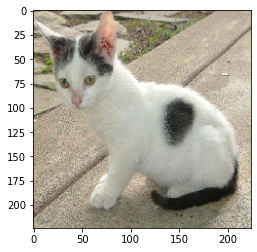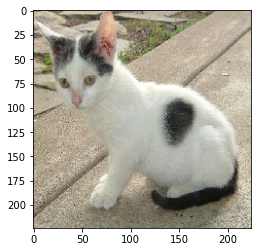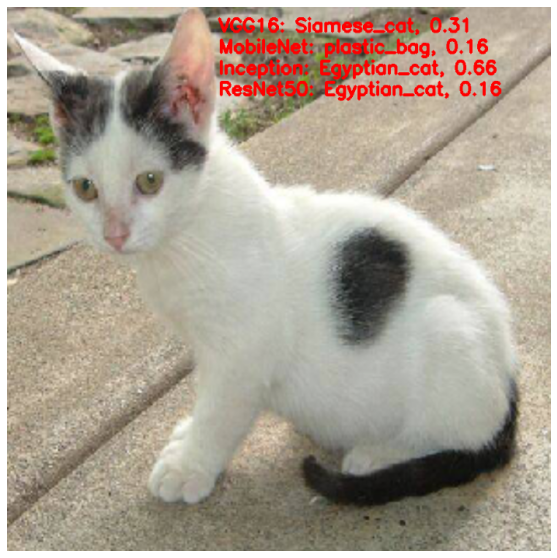Applying Pretrained Deep Neural Networks for Image Classification
Contents
Applying Pretrained Deep Neural Networks for Image Classification#
Author: Johannes Maucher
Last update: 04.11.2020
This notebook demonstrates the application of pretrained, publicable available neural networks in the task for which these nets have been trained - ImageNet object classification.
Load the models from keras applications folder#
import numpy as np
from tensorflow.keras.applications import vgg16, inception_v3, resnet50, mobilenet
vgg_model = vgg16.VGG16(weights='imagenet')
inception_model = inception_v3.InceptionV3(weights='imagenet')
resnet_model = resnet50.ResNet50(weights='imagenet')
mobilenet_model = mobilenet.MobileNet(weights='imagenet')
from tensorflow.keras.preprocessing.image import load_img
from tensorflow.keras.preprocessing.image import img_to_array
from tensorflow.keras.applications.imagenet_utils import decode_predictions
import matplotlib.pyplot as plt
%matplotlib inline
Perform Pre-processing before feeding the image to the network#
Keras loads the image using PIL library. This is done using the load_img function. The image is in \(width \times height \times channels\) format.
Convert the image from PIL format to Numpy format ( \(height \times width \times channels\) ) using image_to_array function.
Form a batch of image( s ) to feed the network. This is done using the expand_dims function in Numpy
filename = 'cat.jpg'
# load an image in PIL format
original = load_img(filename, target_size=(224, 224))
print(type(original))
print('PIL image size',original.size)
plt.imshow(original)
plt.show()
<class 'PIL.Image.Image'>
PIL image size (224, 224)

# convert the PIL image to a numpy array
# IN PIL - image is in (width, height, channel)
# In Numpy - image is in (height, width, channel)
numpy_image = img_to_array(original)
plt.imshow(np.uint8(numpy_image))
plt.show()
print('numpy array size',numpy_image.shape)

numpy array size (224, 224, 3)
# Convert the image / images into batch format
# expand_dims will add an extra dimension to the data at a particular axis
# We want the input matrix to the network to be of the form (batchsize, height, width, channels)
# Thus we add the extra dimension to the axis 0.
image_batch = np.expand_dims(numpy_image, axis=0)
print('image batch size', image_batch.shape)
plt.imshow(np.uint8(image_batch[0]))
image batch size (1, 224, 224, 3)
<matplotlib.image.AxesImage at 0x7fbc5ce224c0>

Predictions using the various Networks#
Preprocess the input by subtracting the mean value from each channel of the images in the batch. Mean is an array of three elements obtained by the average of R, G, B pixels of all images obtained from ImageNet
get the probabilities of occurrence for each class
convert the probabilities to human-readable labels
VGG16 Network#
# prepare the image for the VGG model
processed_image = vgg16.preprocess_input(image_batch.copy())
# get the predicted probabilities for each class
predictions = vgg_model.predict(processed_image)
#print(predictions)
# convert the probabilities to class labels
# We will get top 5 predictions which is the default
label_vgg = decode_predictions(predictions)
label_vgg
[[('n02123597', 'Siamese_cat', 0.30934194),
('n01877812', 'wallaby', 0.08034124),
('n02326432', 'hare', 0.07509843),
('n02325366', 'wood_rabbit', 0.0505307),
('n03223299', 'doormat', 0.048173614)]]
ResNet50 Network#
# prepare the image for the ResNet50 model
processed_image = resnet50.preprocess_input(image_batch.copy())
# get the predicted probabilities for each class
predictions = resnet_model.predict(processed_image)
# convert the probabilities to class labels
# If you want to see the top 3 predictions, specify it using the top argument
label_resnet = decode_predictions(predictions, top=3)
label_resnet
[[('n02124075', 'Egyptian_cat', 0.1573761),
('n03958227', 'plastic_bag', 0.14362858),
('n03223299', 'doormat', 0.14099422)]]
MobileNet Network#
# prepare the image for the MobileNet model
processed_image = mobilenet.preprocess_input(image_batch.copy())
# get the predicted probabilities for each class
predictions = mobilenet_model.predict(processed_image)
# convert the probabilities to imagenet class labels
label_mobilenet = decode_predictions(predictions)
label_mobilenet
[[('n03958227', 'plastic_bag', 0.15703687),
('n02124075', 'Egyptian_cat', 0.11697365),
('n02123597', 'Siamese_cat', 0.10532726),
('n02123045', 'tabby', 0.07564851),
('n02909870', 'bucket', 0.05468151)]]
Inception_V3 Network#
The input size for inception network is different from the other networks. It accepts inputs of size (299, 299).
Thus we load the image with target size according to that.
# load an image in PIL format
original = load_img(filename, target_size=(299, 299))
# Convert the PIL image into numpy array
numpy_image = img_to_array(original)
# reshape data in terms of batchsize
image_batch = np.expand_dims(numpy_image, axis=0)
# prepare the image for the Inception model
processed_image = inception_v3.preprocess_input(image_batch.copy())
# get the predicted probabilities for each class
predictions = inception_model.predict(processed_image)
# convert the probabilities to class labels
label_inception = decode_predictions(predictions)
label_inception
[[('n02124075', 'Egyptian_cat', 0.66225827),
('n02123045', 'tabby', 0.05028518),
('n02123597', 'Siamese_cat', 0.036381554),
('n02123159', 'tiger_cat', 0.023522448),
('n03223299', 'doormat', 0.015205734)]]
#!pip install opencv-python
import cv2
numpy_image = np.uint8(img_to_array(original)).copy()
numpy_image = cv2.resize(numpy_image,(900,900))
cv2.putText(numpy_image, "VGG16: {}, {:.2f}".format(label_vgg[0][0][1], label_vgg[0][0][2]) , (350, 40), cv2.FONT_HERSHEY_SIMPLEX, 1, (255, 0, 0), 3)
cv2.putText(numpy_image, "MobileNet: {}, {:.2f}".format(label_mobilenet[0][0][1], label_mobilenet[0][0][2]) , (350, 75), cv2.FONT_HERSHEY_SIMPLEX, 1, (255, 0, 0), 3)
cv2.putText(numpy_image, "Inception: {}, {:.2f}".format(label_inception[0][0][1], label_inception[0][0][2]) , (350, 110), cv2.FONT_HERSHEY_SIMPLEX, 1, (255, 0, 0), 3)
cv2.putText(numpy_image, "ResNet50: {}, {:.2f}".format(label_resnet[0][0][1], label_resnet[0][0][2]) , (350, 145), cv2.FONT_HERSHEY_SIMPLEX, 1, (255, 0, 0), 3)
numpy_image = cv2.resize(numpy_image, (700,700))
cv2.imwrite("images/{}_output.jpg".format(filename.split('/')[-1].split('.')[0]),cv2.cvtColor(numpy_image, cv2.COLOR_RGB2BGR))
False
plt.figure(figsize=[10,10])
plt.imshow(numpy_image)
plt.axis('off')
(-0.5, 699.5, 699.5, -0.5)


